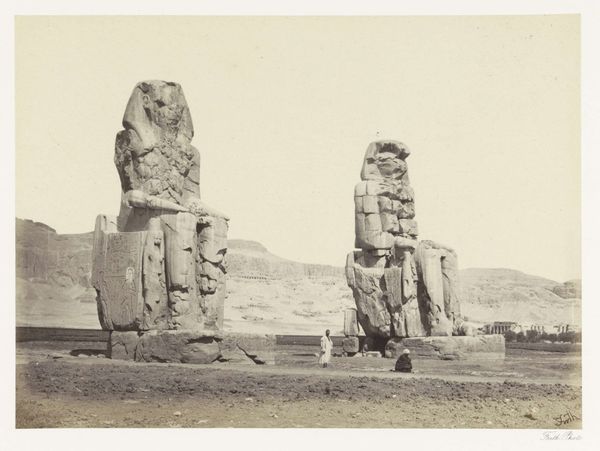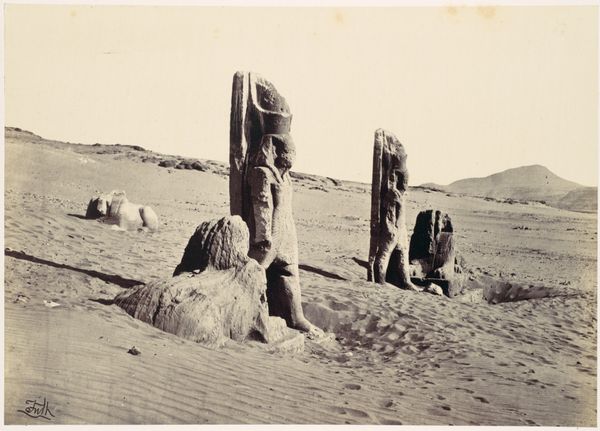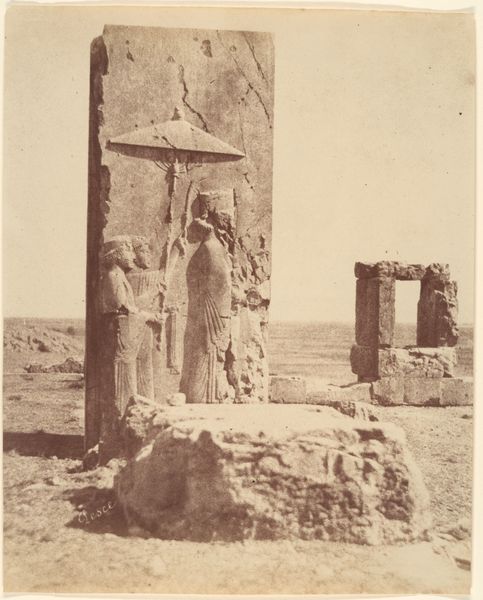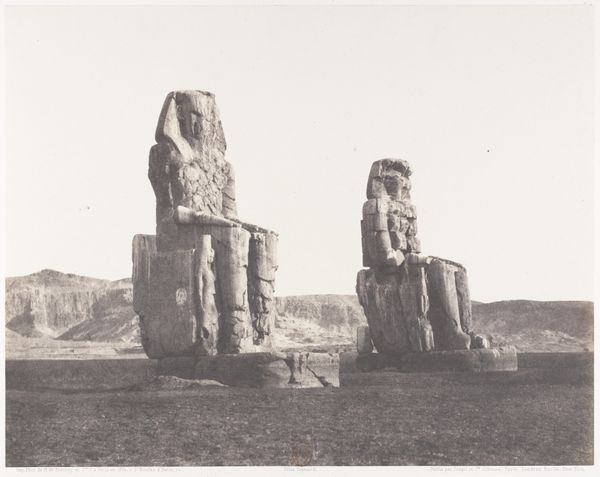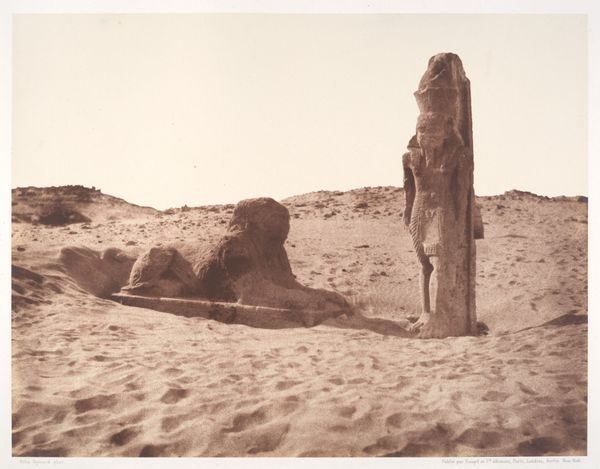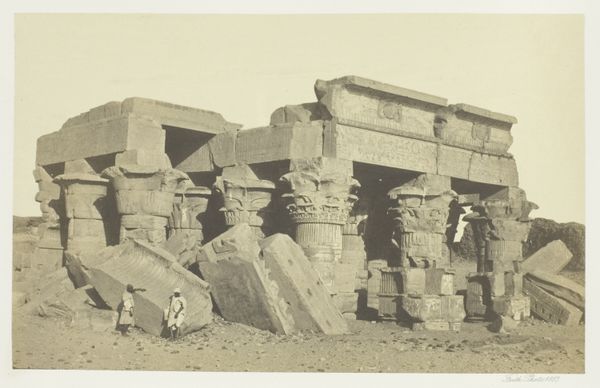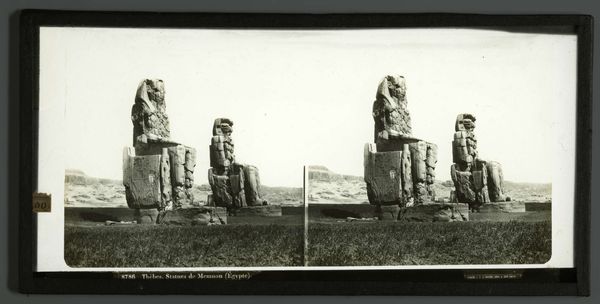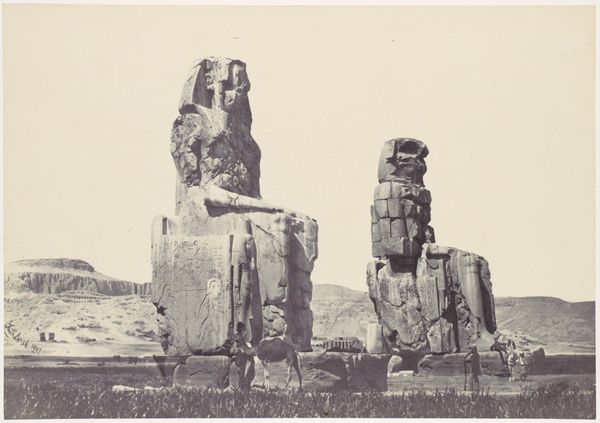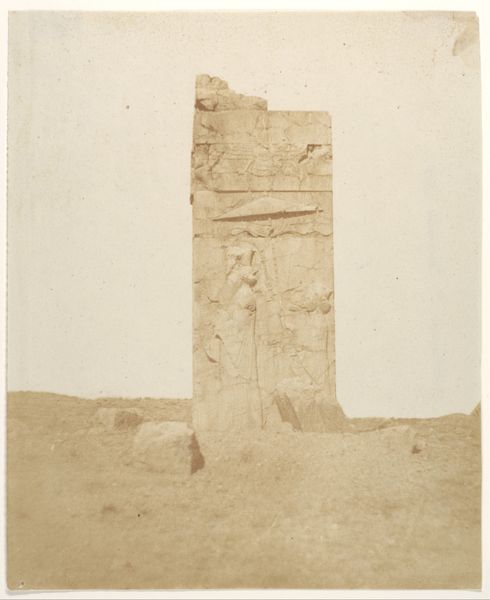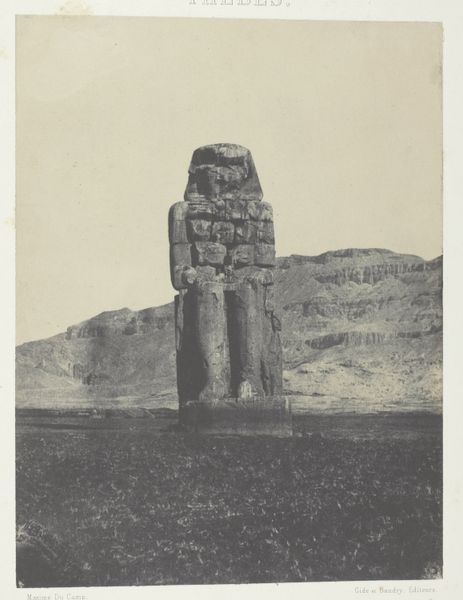
silver, print, photography, site-specific
#
print photography
#
16_19th-century
#
silver
# print
#
war
#
landscape
#
ancient-egyptian-art
#
archive photography
#
photography
#
egypt
#
couple photography
#
geometric
#
ancient-mediterranean
#
site-specific
Dimensions: 15 × 21.5 cm (image/paper); 29.4 × 42.6 cm (album page)
Copyright: Public Domain
Editor: So, this is Francis Frith's "Colossi and Sphynx at Wady Saboua, Nubia," a silver print from 1857. I'm really struck by the scale – the vast emptiness surrounding these monumental sculptures. What do you see in this piece, looking at it from a curatorial perspective? Curator: What intrigues me is Frith’s photographic process and the industrialization of image-making. Think about the labor involved: transporting the equipment, preparing the collodion plates in the field, and the printing process itself. This wasn't just an artistic endeavor; it was a logistical undertaking, dependent on a network of labor and materials extracted from the land. What impact do you think this industrial process has on how we view ancient artifacts and labour relations? Editor: That’s a great point. It frames these ancient sculptures not just as objects of art or religious significance, but as products of intense manual labor in their own right. And now, Frith's photograph becomes another layer of that—a 19th-century production. Is it possible that by photographing it and bringing it back "as a photo," this extraction erases the object's earlier historical and social contexts? Curator: Precisely! This raises essential questions. What narratives are being constructed through the photograph's circulation, and what are we consuming? By viewing these prints in galleries or books, are we also consuming a specific type of colonial gaze that is disconnected from local meanings? Consider the material cost: The extraction of silver for the print, the paper made from wood pulp. The artwork embodies global economies and industrial progress that might also reflect the economic reality of Nubia, even today. Editor: I hadn't thought about it that way. So the photograph isn’t just about capturing an image but about all the layers of production and consumption embedded within it. That reframes my understanding of this, and similar works, entirely! Thanks for this insight. Curator: It’s crucial to examine these hidden layers. By interrogating the materiality of art, we can reveal power dynamics and broader cultural implications shaping art history itself. It enriches our understanding of Frith's role beyond that of just a photographer, to an agent involved in economic activities with both ideological and commercial undertones.
Comments
No comments
Be the first to comment and join the conversation on the ultimate creative platform.
